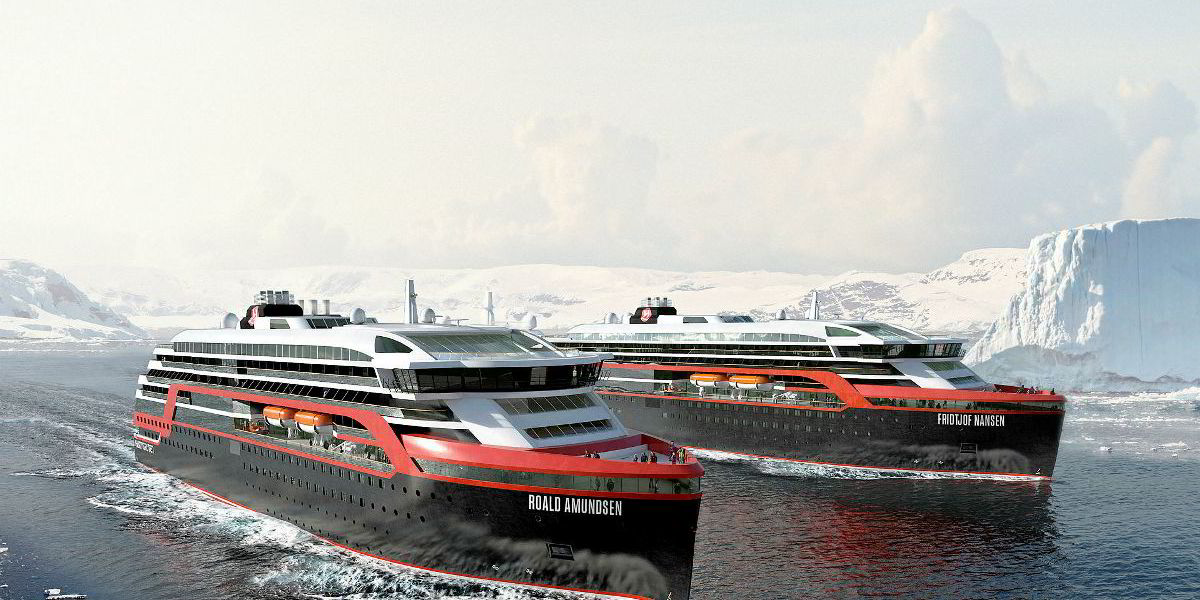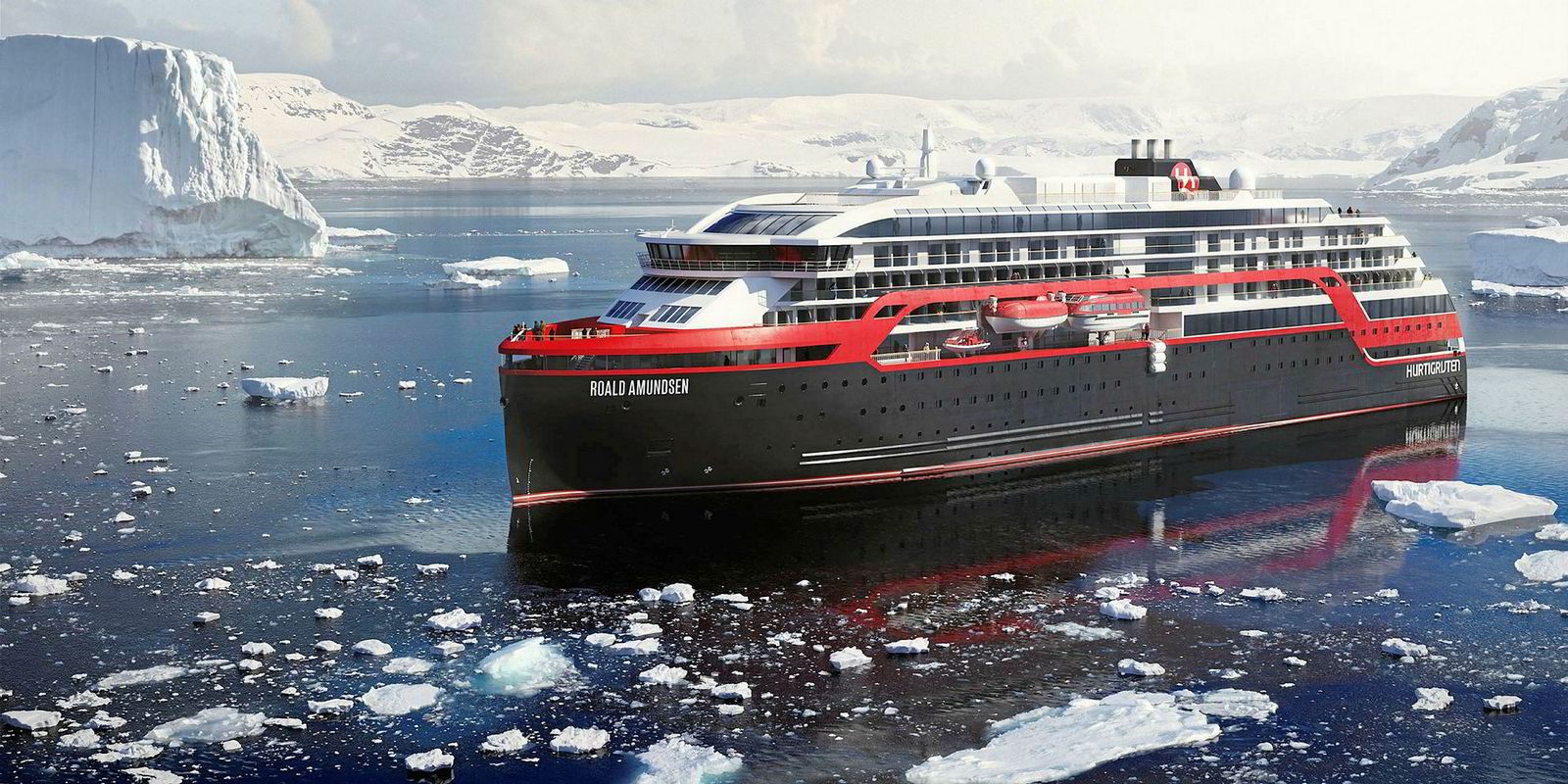Norway’s Hurtigruten has signed a memorandum of understanding to build a third hybrid-powered expedition cruiseship at Kleven Verft.
The newbuilding will be based on the 530 passenger, 20,900-gt Roald Amundsen and Fridtjof Nansen already under construction at Kleven’s Ulsteinvik yard.
Hurtigruten says the latest vessel is expected to be delivered in the second quarter of 2021.
The company placed an original order for two newbuildings with options for another pair.
A price of $130m has been reported for both the Roald Amundsen and Fridtjof Nansen which are pencilled in for delivery in 2019 and 2020.
No price has been disclosed for the third vessel.A contract is expected to be signed around the first quarter of 2019.
Hurtigruten, best known for its ferry and cruise operations along the Norwegian coast, has made it clear that it intends to order all four ships in the series.
It said at the time of signing a letter of intent to build the vessels that it marked the largest investment in the company’s history
The intention then was for the first ship to be delivered as early as 2018.
But delivery of Roald Amundsen has been pushed back to mid 2019 due to the complexity of construction.This has subsequently delayed delivery of Fridtjof Nansen.
Hurtigruten acquired Kleven Verft earlier this year when the builder needed a fresh injection of capital.
Although running primarily on diesel, the expedition cruiseships will be capable of operating for short periods on battery power alone.
The third vessel’s design, construction, engineering and advanced technology will be based on the first ships.
But it will have “substantially larger battery packs to make expedition voyages even more sustainable.”
Said Hurtigruten chief executive Daniel Skjeldam. “These are greener, more advanced cruiseships than the world has ever seen,”
They will raise standards for the “whole industry to follow as we enter a new era of expedition cruising driven by sustainability.”
The new “next generation of explorer ships” are expected, including hull design, to cut fuel consumption and emissions by more than 20%.
“You have seen a Tesla revolution onshore and I think a Tesla revolution is coming to the seas,” commented Hurtigruten’s vice president global communications Rune Thomas Ege at an earlier meeting with the press.
Hurtigruten, which celebrates its 125 th anniversary this year, claims to be the world’s largest expedition cruise operator with a fleet of 17 ships.






